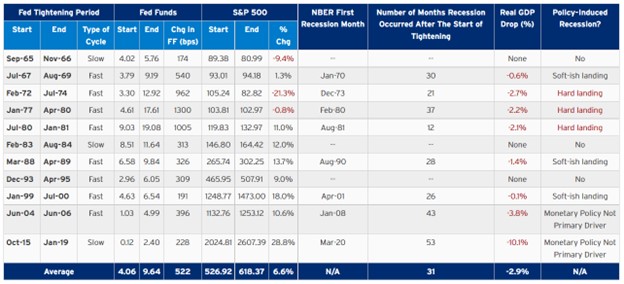Inflation – The Stock Market Achilles Heel
The stock market is a forecasting instrument that anticipates and prices-in future economic conditions. The confluence of rising interest rates, inflation, China Covid lockdowns, and the war in Ukraine has resulted in months of selling. The relentless, indiscriminate selling has pushed the Dow Jones and S&P 500 deep into correction territory while pushing the Nasdaq deep into a bear market. As such, the market appears to be factoring in a worst-case scenario that may result in a Federal Reserve induced recession as a function of over-tightening of monetary policy and/or its inability to combat inflation responsibly for an economic “soft landing.”
The markets are anticipating sequential rate hikes through 2023; however, if inflation has peaked and the tightening cycle turns dovish, then the markets will likely turn the tide on this relentless selling. If inflation has peaked and yields stabilize, these oversold conditions could easily reverse course. For April, market conditions have not been this bad for the Nasdaq and S&P 500 since the Financial Crisis and the Covid 2020 lows, respectively. With signs of inflation peaking, the markets may have fully priced in a worst-case scenario for an inflection point from these oversold conditions. During Federal Reserve tightening cycles, markets typically generate positive returns with an average of a 6.6% return over the tightening period (Figure 1).

Figure 1 – Market performance during periods of Federal Reserve tightening cycles
Signs Of Peaking Inflation
There are many areas of the economy where inflation is receding or has peaked. Although energy prices remain elevated due to the Russia-Ukraine conflict, other commodities and inputs into the CPI composite that contribute to inflation are falling. There have been pullbacks in used car sales, easing supply chains (China’s Covid lockdowns are prolonging the supply chain recovery), copper, steel, grain, soy, freight, lumber, and aluminum prices. Continue reading "Signs Of Peaking Inflation?" →



